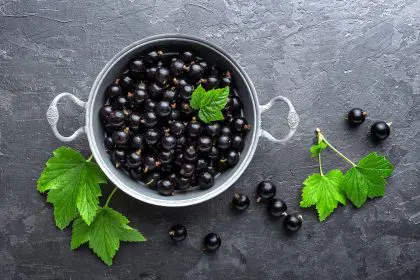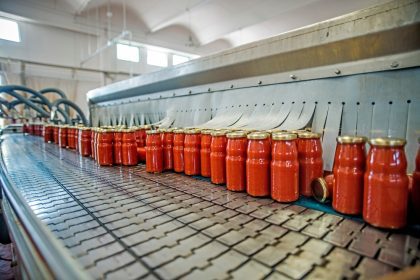Whether you’re newly diagnosed or have been managing diabetes for years, finding delicious recipes that don’t spike blood sugar can feel like a constant challenge. Enter the humble Crock Pot – your new best friend in creating effortless, diabetes-friendly meals that simmer to perfection while you go about your day.
The set-it-and-forget-it convenience of a Crock Pot makes homemade soups accessible even on busy days. For people managing diabetes, homemade options offer crucial advantages over store-bought alternatives – complete control over ingredients, reduced sodium, and the ability to prioritize vegetables, lean proteins, and fiber-rich components that help maintain stable blood glucose levels.
“The slow cooking process naturally enhances flavors without needing added sugars or excess salt,” explains registered dietitian Maria Chen. “This cooking method also preserves nutrients while breaking down tough fibers in vegetables and meats, creating tender, flavorful results.”
Ready to transform your meal planning? These five diabetic-friendly Crock Pot soup recipes deliver incredible taste without blood sugar spikes.
Smart ingredient swaps for blood sugar management
Before diving into recipes, understanding which ingredients help or hinder blood sugar control makes all the difference. Here’s what to limit or avoid when crafting diabetes-friendly soups:
Refined carbohydrates like white potatoes, white rice, and regular pasta can cause rapid blood sugar spikes. Instead, incorporate cauliflower, zucchini, brown rice, or quinoa.
High-sodium broths and canned soups may contribute to elevated blood pressure—a particular concern for people with diabetes who already face increased cardiovascular risk. Opt for low-sodium or homemade broths to maintain flavor without excess salt.
Hidden sugars lurk in many prepared ingredients. Check labels on canned tomatoes, sauces, and broths for added sugars that could affect blood glucose.
Processed meats including sausage, bacon, and deli meats often contain sugar-based preservatives and high sodium levels. Choose lean, unprocessed proteins instead.
Heavy cream and full-fat dairy add unnecessary saturated fat and calories. Experiment with unsweetened almond milk, Greek yogurt, or pureed beans for creamy texture.
1. Zucchini noodle chicken soup
This twist on classic chicken soup swaps traditional noodles for spiralized zucchini, dramatically reducing the carbohydrate content while maintaining that cozy, familiar appeal.
Ingredients: 2 boneless, skinless chicken breasts, 4 cups low-sodium chicken broth, 1 cup chopped carrots, 1 cup chopped celery, 1 cup diced zucchini, 1 cup baby spinach, 1 small onion, chopped, 2 cloves garlic, minced, 1 teaspoon dried oregano, 1 teaspoon dried basil, 1/2 teaspoon black pepper
Instructions: Place chicken, broth, carrots, celery, zucchini, onion, garlic, and herbs in the Crock Pot. Cook on low for 6-8 hours or high for 3-4 hours. Remove chicken, shred it with two forks, and return to the pot. Stir in spinach and let it wilt for about 5 minutes before serving.
The lean protein from the chicken helps stabilize blood sugar, while the abundance of non-starchy vegetables provides essential nutrients and fiber with minimal impact on glucose levels.
2. Hearty lentil and vegetable soup
This plant-based powerhouse delivers impressive protein and fiber—two nutrients that help prevent blood sugar spikes while keeping you satisfied for hours.
Ingredients: 1 cup dried lentils, rinsed, 4 cups low-sodium vegetable broth, 1 cup no-sugar-added diced tomatoes, 1 cup chopped carrots, 1 cup chopped bell peppers, 1 small onion, chopped, 2 cloves garlic, minced, 1 teaspoon cumin, 1 teaspoon turmeric, 1/2 teaspoon black pepper
Instructions: Combine all ingredients in the Crock Pot. Cook on low for 6-8 hours or high for 3-4 hours. Stir occasionally if possible. Serve hot, garnished with fresh herbs if desired.
Lentils rank low on the glycemic index while providing substantial plant protein and soluble fiber—a combination that helps regulate blood sugar and supports heart health.
3. Lean turkey and quinoa chili
This protein-packed chili incorporates quinoa instead of beans for a perfect balance of protein and complex carbohydrates.
Ingredients: 1 lb lean ground turkey, 1 cup cooked quinoa, 4 cups low-sodium tomato sauce, 1 cup no-sugar-added diced tomatoes, 1 cup chopped bell peppers, 1 small onion, chopped, 2 cloves garlic, minced, 1 tablespoon chili powder, 1 teaspoon cumin, 1/2 teaspoon paprika
Instructions: Brown the turkey in a skillet, draining any excess fat. Transfer meat to the Crock Pot and add remaining ingredients. Cook on low for 6-8 hours or high for 3-4 hours. Stir before serving.
Quinoa provides complete protein and fiber while ranking lower on the glycemic index than rice or corn commonly found in traditional chili recipes.
4. Velvety cauliflower soup
This creamy comfort food uses pureed cauliflower and almond milk to achieve silky texture without heavy cream.
Ingredients: 1 head cauliflower, chopped, 4 cups low-sodium vegetable broth, 1 small onion, chopped, 2 cloves garlic, minced, 1 teaspoon dried thyme, 1/2 teaspoon black pepper, 1/2 cup unsweetened almond milk
Instructions: Add cauliflower, broth, onion, garlic, thyme, and pepper to the Crock Pot. Cook on low for 6-8 hours or high for 3-4 hours. Using an immersion blender, puree the soup until smooth. Stir in almond milk before serving.
Cauliflower is remarkably low in carbohydrates while providing essential nutrients, making it an ideal foundation for creamy soups without blood sugar concerns.
5. Savory beef and barley soup
This hearty classic incorporates barley, a slow-digesting whole grain that causes gentler blood sugar changes than refined grains.
Ingredients: 1 lb lean beef stew meat, cubed, 4 cups low-sodium beef broth, 1/2 cup pearl barley, rinsed, 1 cup chopped carrots, 1 cup chopped celery, 1 small onion, chopped, 2 cloves garlic, minced, 1 teaspoon dried thyme, 1/2 teaspoon black pepper
Instructions: Brown beef cubes in a skillet, draining any excess fat. Transfer meat to the Crock Pot and add remaining ingredients. Cook on low for 7-8 hours or high for 4-5 hours. Stir before serving.
The modest portion of barley provides soluble fiber that slows digestion and helps regulate blood glucose, while lean beef delivers satiating protein.
Common questions about diabetes and soup
Which soup ingredients best support blood sugar control?
Non-starchy vegetables, lean proteins, and fiber-rich ingredients like lentils and barley help maintain stable blood glucose levels. Look for components with a low glycemic index that digest slowly, preventing rapid blood sugar rises.
Why is homemade soup better than canned for diabetes management?
Commercial soups often contain hidden sugars, excessive sodium, and refined carbohydrates that can elevate blood sugar and blood pressure. Homemade versions allow complete control over ingredients, sodium levels, and portion sizes.
Can I include potatoes in diabetes-friendly soups?
In limited quantities, yes. Sweet potatoes rank lower on the glycemic index than white potatoes, making them a better choice. For lowest impact, consider substituting cauliflower, turnips, or radishes which deliver similar texture with fewer carbohydrates.
What cooking methods best preserve nutrients for diabetes wellness?
Slow cooking stands out for its ability to retain water-soluble vitamins while enhancing flavors without added fats or sugars. Other beneficial techniques include steaming, air frying, and grilling, which require minimal added fats while maximizing natural flavors.
How can I thicken soup without flour or cornstarch?
Instead of traditional thickeners that add refined carbohydrates, try pureeing a portion of the vegetables already in your soup, or add a small amount of chia seeds, which gel naturally while contributing beneficial omega-3 fatty acids.
Armed with these recipes and ingredient strategies, creating diabetes-friendly soups becomes both manageable and enjoyable. The slow cooker’s convenience means you’re more likely to prepare homemade meals regularly—a cornerstone of effective diabetes management.
Experiment with these foundational recipes, adjusting seasonings and vegetables to your preference while maintaining the diabetes-friendly principles. Your taste buds—and your glucose meter—will thank you.

















